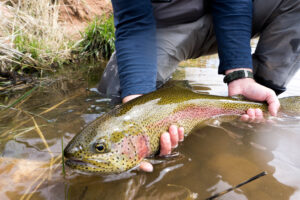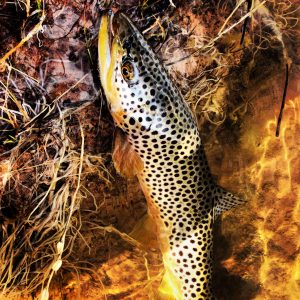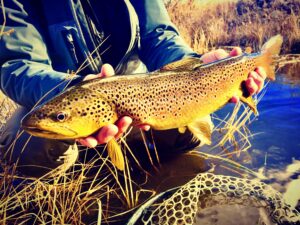As the golden hues of autumn begin to shimmer across the landscape, fly fishers everywhere feel an irresistible call to the lakes. The fall season brings crisp air, striking foliage, and a unique set of opportunities for those seeking trout. This is the time when the lakes are quiet, the crowds thin, and the fish prepare for the long winter ahead, becoming especially active and aggressive. For the dedicated angler, fly fishing for trout in lakes during the fall is nothing short of magical.
Fall marks a crucial transition in the trout’s annual cycle. As daylight wanes and water temperatures begin to drop, trout sense the change and respond accordingly. Many species—rainbow, brown, brook, and cutthroat—become more active, feeding heavily to build up energy reserves. Brown trout, in particular, are preparing for their spawning run, often displaying increased aggression.
The cooler water means increased oxygen, making trout more comfortable and willing to move into shallower waters. They tend to cruise the edges of the lake, around submerged logs, rocky points, weed beds, and drop-offs. Understanding these behavioral patterns is essential for success in autumn fly fishing.
While rivers are popular, lakes offer unique advantages for fall trout fishing. Compared to the rush of spring meltwaters and the warmth of midsummer, autumn lakes provide stable conditions. Weed growth has peaked and often begins to die back, creating open channels for casting and clearer visibility for both angler and fish. The reduction in recreational boating and swimming means less disturbance, allowing trout to settle into predictable patterns.
Moreover, the aquatic insect life in lakes remains active into the fall, with hatches of midges, caddisflies, and even late-season mayflies. Terrestrials such as ants and beetles find themselves blown into the water during autumn winds, and baitfish like shiners and sculpins become key forage items as trout gear up for winter.
The right fly can make all the difference in fall lake fishing. Consider these proven performers:
- Streamers: Woolly Buggers, Zonkers, and Leeches mimic baitfish and leeches—prime targets for hungry, aggressive trout. Fish them with an active retrieve near structure and drop-offs.
- Nymphs: Pheasant Tail, Hare’s Ear, and Chironomid patterns excel during midge hatches. Suspend these under an indicator or fish them on the bottom with a slow retrieve.
- Dry Flies: Late-season Caddis, Parachute Adams, Hoppers and Ant patterns are effective when trout are rising to surface insects or terrestrials.
Autumn fly fishing is as much about strategy as it is about presentation. Here are key techniques:
- Location Is Everything: Focus on windward shores where food is blown into the water. Look for submerged structure—fallen trees, rocky points, and weed beds.
- Time of Day: Early morning and late afternoon are often best, as trout are more active with low light and cooler water.
- Retrieves: Vary your retrieve speed and pausing intervals. Sometimes a slow, steady pull draws strikes; other times, erratic twitches trigger instinctive attacks.
- Depth Management: Use sinking lines or weighted flies to probe different depths. Trout often move up and down in the water column through the day.
- Observation: Watch for surface activity, birds feeding, or subtle rises. These clues reveal where trout are feeding.
Fall is a season of rapid change. Storms can roll in quickly, water levels may fluctuate, and days grow shorter. Always plan for safety—inform someone of your plans, carry a map or GPS, and pack extra food and water.
Another unique aspect of fall fishing is the interplay between wildlife and angler. Migrating birds, rutting deer, and the haunting calls of loons add to the ambiance. The lakes are quieter, the air is brisk, and the experience is deeply rewarding.
Autumn transforms lakes into serene, vibrant arenas for fly fishing. The blend of active trout, peaceful surroundings, and dramatic scenery is unmatched. Success comes from reading the water, adapting to changing conditions, and embracing the artistry of fly fishing. Whether you seek solitude or camaraderie, trophy fish or quiet reflection, fall lakes are waiting—ready to reward those who cast with skill, patience, and respect for nature.
So pack your gear, tie your favorite flies, and step into the crisp embrace of autumn. The trout are waiting, and the lakes hold stories just beneath the surface—waiting for you to discover them.



